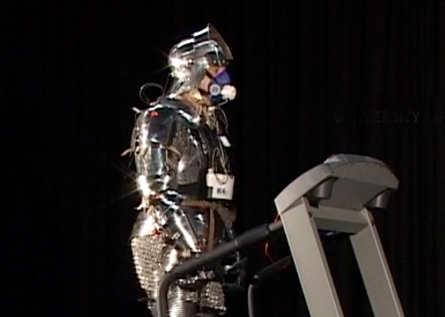Body & Brain
Knights’ bodily burden, go-to-sleep nerve cells, rat empathy and more in this week’s news
It’s hard being a knight
Knights decked out in battle gear use twice as much energy to storm the castle as their less shiny counterparts. Scientists from the U.K. and Italy tested energetic demands using fight interpreters wearing replicas of 15th century armor, which added roughly 40 percent to the interpreters’ body weight. Metal-clad fighters took shorter, shallower breaths and used about double the energy they used when unarmored, whether walking or running on a treadmill, the team reports online July 20 in the Proceedings of the Royal Society B. Swinging metal-encased limbs required 63 percent more mechanical power. The authors suggest that heavy suits of armor may explain why French knights were walloped by the British during the Battle of Agincourt. —Nadia Drake

Sleep-inducing nerve cells
A sandman made of orange light can bring sleep to mice. Scientists engineered mice so that a small number of sleep-related nerve cells could be shut down by a beam of orange light. A zap of light silenced the nerve cells and put the animals to sleep. This effect worked only toward the end of the day, when nocturnal mice are naturally sleepy. The results could lead to a better understanding of narcolepsy, in which a similar group of neurons may malfunction, an international team of scientists reports in the July 20 Journal of Neuroscience. —Laura Sanders
Tired muscles, tired brain
Workout buffs know that exhausted muscles make the last rep in the gym sloppy, but new research shows that physical exhaustion tires the brain, too. In the study, participants held a weight with their arm extended for as long as they could. Immediately afterward, they were asked to imagine pointing at three targets while researchers timed them. When the arm was tired, participants imagined themselves speeding through the task, suggesting that physical exhaustion had crept into the brain. The results may help sports trainers design more effective techniques, French researchers write in the July 20 Journal of Neuroscience. —Laura Sanders
Untangling the brain’s mess
A new study identifies the developing brain’s cleanup crew. As brains grow, nerve cells form an excess of connections, many of which need to be culled. In newborn mice, cells called microglia infiltrate the brain and remove these superfluous connections, called synapses, Italian researchers report online July 21 in Science. These cells are known to slurp up debris after brain damage, but their new role in the developing brain is a surprise. The results may help researchers understand certain neurological disorders in which a brain has too many synapses. —Laura Sanders
Rat-to-rat empathy
There’s little love lost between humans and rats, but rats show at least some signs of empathy toward their furry brethren. Female rodents who had experienced a foot shock in the past were more likely to freeze in fear when they witnessed a fellow female rodent get zapped, scientists in Portugal and the Netherlands report online July 13 in PLoS ONE. Rats who had never been shocked didn’t vicariously freeze when they saw a cagemate receive a shock. Though the researchers don’t know the emotional state of the rat, this contagious behavior may offer a way to study some aspects of empathy, the researchers suggest. —Laura Sanders







